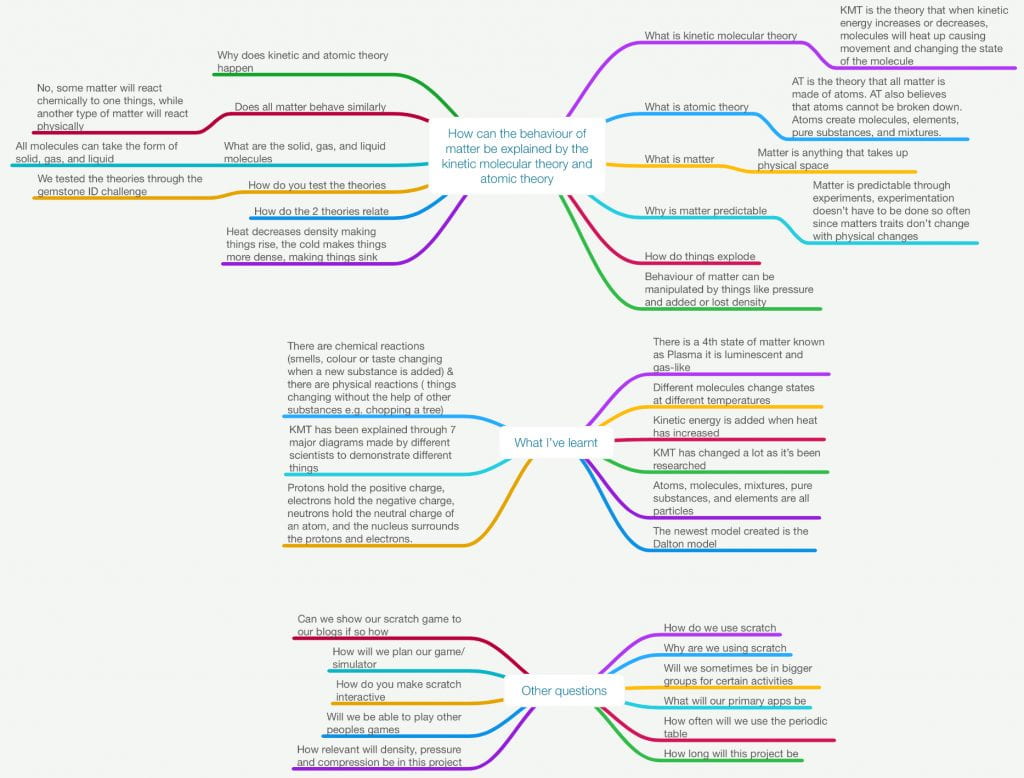
What you’re seeing above is my simulator (coded in scratch) for the “Chemistry Coding” Scimatics project. This was a short but fun 3 week solo project. The end goal was for everyone to have a simulator or game that demonstrates the kinetic molecular theory & the atomic theory.
We started the project of pretty standard with milestone 1 being a mind map. The mind map was to show any knowledge we already have on these 2 topics as well as questions we would answer at the end of the project. When I went back to answer my questions I saw my scientific communication skills improve. Some of the questions I could only understand because I wrote them.
With all the learning we had done, it was time to apply it in milestone 2 in creating our particle models. The models we made had to be scientifically accurate with the amount of electrons, neutrons, and protons, and the different atoms in the molecules. This is where our scientific communication skills came in, as we wouldn’t have been able to complete the milestone without it.
Our third milestone was a written test based on everything we have been learning. This test was not for marks but to see where everyone is and what we need to cover more thoroughly. Here is where my curiosity for the project was shown. I didn’t do well on the test, but it definitely made me want to learn more about the topic.
Milestone 4 is where we finally start to get to the coding with a coding plan. This is just a short list of all the features, purposes, how the simulator demonstrates kinetic molecular theory, and how its interactive. I had to use reasoning when planning out my game. After analyzing scratch to see what it could do for this project I decided on a simulator where you can change the type of particle & its temperature which changes the state of matter.
Now we’re coding the game in milestone 5, where most of the learning is demonstrated. I had to go through many revisions with my coding, trying out different patterns to solve problems that came up (spoiler alert: a lot did). Coding requires using logic & prediction, since we didn’t have time to go through every single coding pattern. This was developed over time getting used to scratch and was a skill I believe I could have shown better through more practice with scratch. Another thing was making sure our games were scientifically accurate. Making sure if the logic of the real world is applied to the simulator.
All the work throughout this project helped me answer this projects driving question: “How can the behaviour of matter be explained by the kinetic molecular and atomic theory”.
This can be answered through the simulations or games we made. Since the simulations demonstrate the theories with different features.



